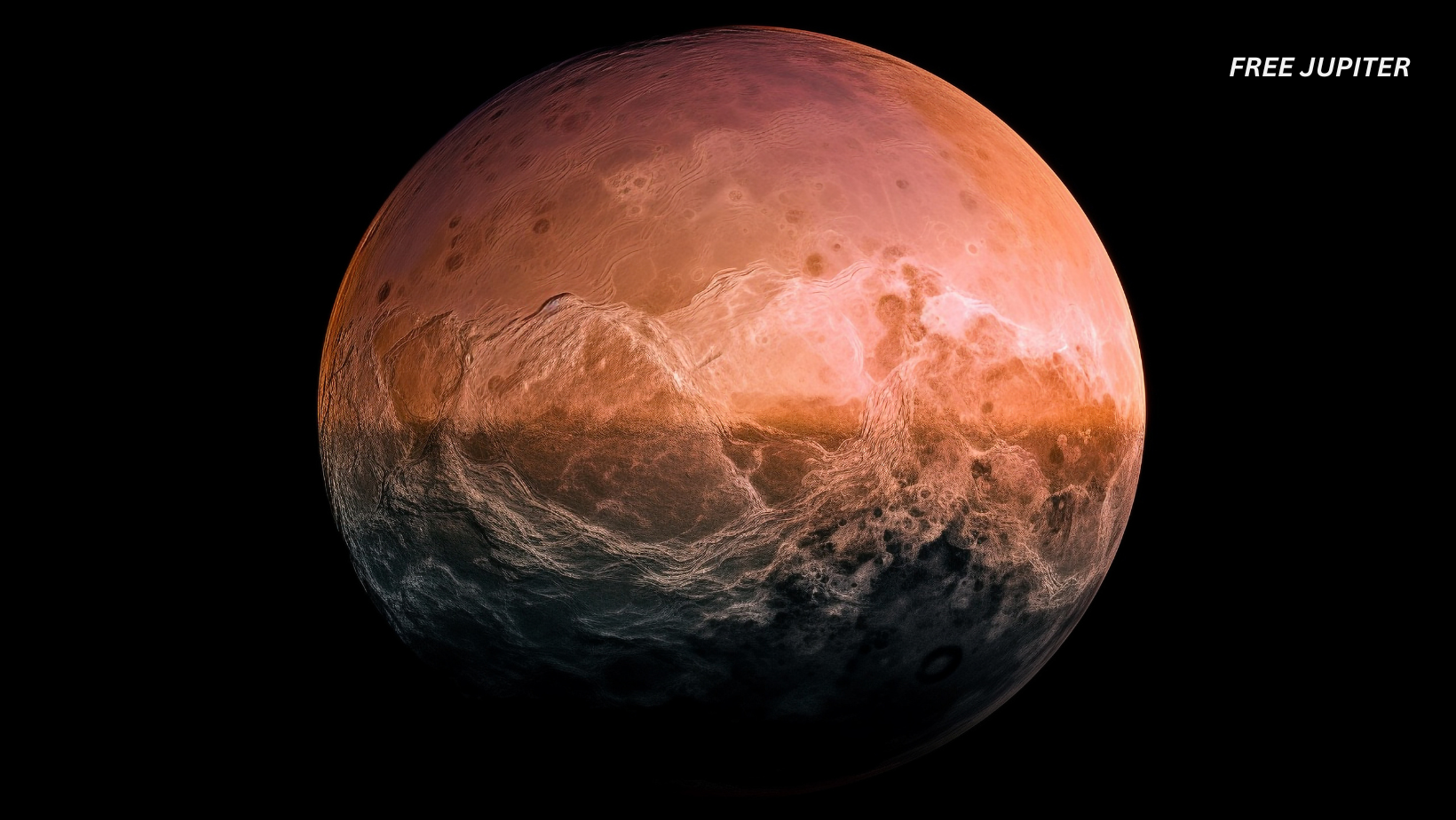Friendly Note: FreeJupiter.com shares general info for curious minds 🌟 Please fact-check all claims—and always check health matters with a professional 💙
The James Webb Space Telescope (JWST), humanity’s most powerful eye in the cosmos, has just peeled back another cosmic curtain—and this time, the spotlight falls on one of the solar system’s most misunderstood worlds: Pluto.
Once dismissed as a frozen relic drifting in the solar system’s deep freeze, Pluto has proven again that it’s full of surprises. A new study, powered by JWST data and published in Nature Astronomy on June 2, reveals that Pluto doesn’t just have an atmosphere—it has a weird one. One that may represent an entirely new kind of climate in our solar system.
Pluto’s Comeback Story
Back in 2015, when NASA’s New Horizons spacecraft zipped past Pluto for the first time, expectations were low. Scientists thought they’d find a frozen, inactive world. Instead, they discovered a place brimming with dynamic landscapes—icy plains, towering nitrogen mountains, and a mysteriously glowing sky. That bluish haze, which stretches over 185 miles above Pluto’s surface, immediately raised eyebrows.
Fast forward to 2025, and the JWST has now confirmed something even more peculiar: this haze isn’t just for show. It appears to regulate Pluto’s climate.
“This is unique in the solar system,” said Tanguy Bertrand, the lead astronomer on the study from the Paris Observatory. “It’s like Pluto invented its own version of weather.”
The Secret Life of Haze
So, what makes this haze so special?
It’s made up of complex organic particles—called tholins—that form when sunlight interacts with methane and nitrogen in Pluto’s thin atmosphere. These particles don’t just float around aimlessly; they actively soak up sunlight during the day and radiate it out as heat at night. This process is called radiative cooling, and it’s like Pluto’s version of air conditioning—only it’s happening 4 billion miles from the Sun.
Thanks to this haze, Pluto’s upper atmosphere is a frigid -333°F (-203°C), which is 30 degrees colder than scientists had predicted based on gas composition alone.
The theory of haze-driven cooling was first proposed in 2017, but proving it was tricky. Pluto’s large moon, Charon, kept photobombing the data. Since the two worlds are so close together, it was hard to tell whether the telescope was detecting heat from Pluto’s haze—or from Charon itself.
That changed in 2022 when JWST’s sharp infrared instruments were finally able to separate the two. The haze’s glow in the mid-infrared range matched predictions exactly, sealing the deal.
Read more: The ‘Ocean Spiral’: Japan’s Groundbreaking New Underwater City Will Run on Deep-Sea Thermal Energy
Supporting Discoveries From Other Worlds
Interestingly, Pluto may not be the only body cloaked in this kind of climate magic. Let’s zoom out for a moment and look at other places in the solar system where hazy atmospheres also play a role.
Titan: Saturn’s Hazy, Alien Twin of Earth
If Pluto is the mysterious outsider of the solar system, then Titan is its strange, distant cousin who might just remind us of home—if home were covered in orange fog, had lakes of liquid methane, and reached temperatures cold enough to freeze steel.
Titan is Saturn’s largest moon, and it’s a world that continues to captivate scientists with its eerie, Earth-like qualities and thick, murky atmosphere. But make no mistake—Titan is no second-rate copy. It’s an exotic and chemically rich environment with its own unique rules, and it just might hold clues about what Earth was like long before we showed up.
Wrapped in Haze: A Familiar Story with an Alien Twist
Much like Pluto, Titan is blanketed in a dense haze made of complex organic molecules. This haze isn’t just decorative—it plays an important role in Titan’s climate. These airborne particles, created when sunlight interacts with atmospheric methane and nitrogen, influence how the moon traps and releases heat, possibly shaping everything from its surface temperature to weather cycles.
But here’s the kicker: while Pluto’s haze acts as a planetary air conditioner by cooling its upper atmosphere, Titan’s haze seems to do a bit of both—it traps some heat while still allowing certain layers to cool. Think of it as a planetary thermostat stuck in “mood swing” mode.
This atmospheric behavior is more than just a curiosity. It points to the possibility that Titan’s climate is dynamic—maybe even seasonal—like Earth’s. It experiences rain (yes, methane rain), has rivers and lakes (made of hydrocarbons), and even goes through long, slow seasons thanks to Saturn’s 29-year-long orbit around the Sun.
A Methane Cycle That Mirrors Earth’s Water Cycle
What makes Titan even more fascinating is its methane-based hydrological system. On Earth, we have water that evaporates, condenses into clouds, rains down, and flows into rivers and oceans. Titan does all that too—but with methane.
Its thick haze plays a crucial role in this cycle. By controlling the energy balance in the atmosphere, the haze likely determines when and where methane clouds form and when those ghostly orange rains will fall. Scientists believe these methane-driven processes could lead to erosion, dune formation, and possibly even underground reservoirs—all features that shape the moon’s surface over time.
Read more: This Natural Plant Extract Can Remove Up to 90% of Microplastics From Water
Peeking Into Titan’s Past—and Our Own
Many researchers suspect that Titan could resemble what early Earth looked like before oxygen filled the skies. The haze enveloping Titan might be similar to the organic smog that once wrapped our own planet—a chemical soup from which life might have first emerged. By comparing Titan’s thick haze with Pluto’s newly discovered climate system, scientists are starting to piece together a bigger puzzle: how complex chemistry behaves in alien atmospheres, and what that might mean for the possibility of life.
In a way, Titan is like a frozen laboratory for prebiotic chemistry—the chemistry that existed before biology came into the picture. And that’s where NASA’s upcoming mission comes in.
Early Earth: A Familiar Fog?
Billions of years ago, before oxygen began filling Earth’s atmosphere, our planet might have looked hazy, too. In fact, some scientists believe that early Earth was wrapped in a reddish fog made from methane-driven reactions—very similar to what’s happening on Pluto today.
This prehistoric haze might have helped regulate temperatures and shield early microbial life from harmful ultraviolet rays, creating a stable environment for life to begin.
- Related Research: “Organic Haze on Prebiotic Earth Could Have Played a Crucial Role in Climate Regulation” – Proceedings of the National Academy of Sciences (2021)
Why This Matters for Planetary Science
Xi Zhang, the planetary scientist who proposed the haze-cooling theory in 2017, calls the new JWST confirmation “a rare and lucky moment in planetary science.” Normally, it takes decades to confirm a climate model. This one only took a few years, thanks to JWST’s powerful tools.
More importantly, it opens up an entirely new area of research. If Pluto—a distant, icy dwarf planet—can have a self-regulating, haze-driven climate, then so might other unexplored worlds in our solar system. And if that’s true, the conditions for life, or at least the ingredients for it, might be more widespread than we ever imagined.
Read more: Astronomers Detect The Most Powerful Explosions in the Universe Since the Big Bang
What’s Next?
Scientists are now eyeing other JWST targets—like Titan, Triton, and even exoplanets with hazy atmospheres—to see if similar climate dynamics exist.
As for Pluto, the findings raise a poetic possibility: that one of the solar system’s smallest and coldest places may hold some of the biggest clues about how planets evolve—and how life, against all odds, might emerge from the haze.










